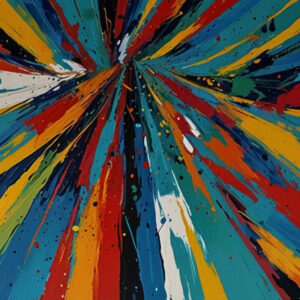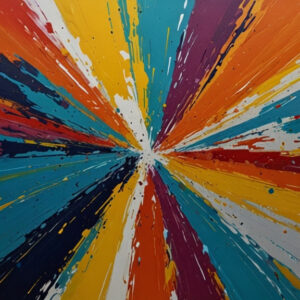Description
1. Visual Communication
3D models provide a realistic visual representation of concepts that are often difficult to convey through 2D images or traditional sketches. For fuel stations, this is crucial in showcasing layout, design elements, and customer flow. By using 3D models, stakeholders can better understand how the finished project will look and function, allowing for informed decision-making.
2. Enhanced Marketing Strategies
In a competitive market, effective marketing is essential. Custom 3D models can be used in promotional materials, websites, and social media platforms, providing potential customers with an engaging and interactive experience. This not only enhances brand awareness but also attracts more customers to the fuel station.
3. Streamlining Design Processes
The design and planning phases of fuel station construction can be complex and time-consuming. 3D models simplify this process by allowing architects and engineers to visualize the entire structure, making it easier to identify potential issues before construction begins. This proactive approach minimizes costly delays and changes during the building phase.
Understanding Custom 3D Model Art Creation Services
1. What Are Custom 3D Models?
Custom 3D models are digital representations of objects, structures, or environments created using specialized software. They can be tailored to meet the specific needs and preferences of clients, ensuring that the final product aligns with their vision. In the context of fuel stations, these models can include detailed representations of the station’s architecture, signage, fuel pumps, and surrounding landscape.
2. The 3D Modeling Process
The creation of custom 3D models involves several stages, each contributing to the final product’s quality and accuracy.
a. Initial Consultation
The process begins with an initial consultation, where clients discuss their vision, requirements, and any specific features they want to incorporate into the model. This step is crucial for establishing a clear understanding of the project’s goals.
b. Concept Development
Once the client’s vision is understood, the next phase involves developing concepts based on the provided information. Designers create sketches or preliminary 2D designs that serve as a foundation for the 3D model.
c. 3D Modeling
After finalizing the concept, designers use advanced 3D modeling software (such as Blender, 3ds Max, or SketchUp) to create the model. This phase includes detailing the architecture, adding textures, and incorporating realistic lighting to enhance the visual appeal.
d. Client Feedback and Revisions
Once the initial 3D model is complete, it is presented to the client for feedback. This collaborative process allows clients to suggest changes or refinements, ensuring that the final product meets their expectations.
e. Finalization and Delivery
After incorporating any necessary revisions, the final 3D model is rendered and delivered to the client. This model can be used for various purposes, including marketing, presentations, and operational planning.
Applications of Custom 3D Models in Fuel Stations
Custom 3D models have a wide range of applications in the fuel station industry, enhancing both design and operational aspects.
1. Architectural Visualization
Architectural firms can use custom 3D models to visualize the design and layout of new fuel stations. These models provide a comprehensive view of the structure, allowing stakeholders to assess the overall aesthetic and functionality.
2. Marketing and Branding
Fuel stations can use 3D models in their marketing campaigns. High-quality visuals can be shared across various platforms, helping to promote the station’s services and attract new customers. Moreover, these models can be integrated into virtual tours, allowing potential customers to explore the station online.
3. Training and Education
Custom 3D models can also be utilized for training purposes. New employees can familiarize themselves with the layout and operations of the fuel station through interactive 3D simulations, enhancing their understanding of safety protocols and customer service practices.
4. Site Planning and Optimization
3D models can aid in site planning and optimization. By visualizing the layout of pumps, convenience stores, and parking areas, operators can maximize efficiency and customer flow, ensuring a smooth operation.
5. Environmental Impact Assessments
When planning new fuel stations, it is essential to consider environmental factors. Custom 3D models can help assess the impact of a new station on the surrounding area, facilitating better planning and adherence to regulations.
Benefits of Using Custom 3D Models for Fuel Stations
Investing in custom 3D models offers several advantages to fuel station operators and stakeholders.
1. Cost-Effective Design Solutions
While the initial investment in 3D modeling may seem high, the long-term savings can be significant. By identifying design flaws and optimizing layouts before construction begins, businesses can avoid costly modifications and delays.
2. Improved Collaboration
3D models foster better collaboration among stakeholders. Architects, engineers, and marketing teams can all work from the same visual reference, ensuring everyone is aligned on the project’s goals.
3. Enhanced Customer Experience
By utilizing 3D models in marketing materials, fuel stations can provide a more engaging customer experience. High-quality visuals can attract potential customers and encourage them to visit the station.
4. Increased Efficiency
With detailed 3D models, fuel station operators can optimize their layouts for maximum efficiency. This not only improves customer flow but also enhances operational productivity.
5. Future-Proofing
As fuel stations continue to evolve with new technologies and services, custom 3D models allow operators to stay ahead of the curve. By visualizing potential upgrades or changes, businesses can ensure they are prepared for future demands.
Challenges in 3D Model Creation for Fuel Stations
While the benefits of custom 3D models are clear, there are challenges associated with the creation process that must be addressed.
1. Technical Expertise
Creating high-quality 3D models requires a skilled team of designers and technical experts. Businesses must invest in training and resources to ensure they can produce models that meet industry standards.
2. Software Costs
The software required for 3D modeling can be expensive, particularly for small businesses. Companies must weigh the costs of purchasing and maintaining these tools against the potential benefits.
3. Time Constraints
The process of creating custom 3D models can be time-consuming. Businesses must plan accordingly to ensure they can meet project deadlines without sacrificing quality.
4. Evolving Industry Standards
As technology advances, so do industry standards for 3D modeling. Businesses must stay updated on the latest tools and techniques to remain competitive in the market.
The Future of Custom 3D Model Art Creation Services
1. Integration of Virtual Reality (VR) and Augmented Reality (AR)
The future of 3D modeling lies in the integration of virtual and augmented reality. These technologies enable fuel stations to provide immersive experiences, allowing customers to explore the station’s features in a virtual environment. As these technologies become more accessible, their application in fuel stations will likely increase.
2. Advanced Rendering Techniques
With ongoing advancements in rendering technology, the quality of 3D models is expected to improve significantly. High-resolution textures, realistic lighting, and complex animations will enhance the visual appeal of fuel stations, further attracting customers.
3. Sustainability Focus
As the fuel industry shifts towards more sustainable practices, custom 3D models can play a role in visualizing eco-friendly designs. Businesses can showcase green technologies, such as solar panels and electric vehicle charging stations, using 3D models to appeal to environmentally conscious consumers.
4. Customization and Personalization
As consumer preferences continue to evolve, the demand for personalized experiences will grow. Custom 3D models will allow fuel stations to tailor their designs to meet the specific needs and preferences of their target audience, creating unique and memorable experiences.
5. Data-Driven Design
The future of 3D modeling will increasingly rely on data-driven design approaches. By analyzing customer behavior and preferences, fuel stations can create models that enhance operational efficiency and improve customer satisfaction.
Conclusion
Custom 3D model art creation services for fuel stations represent a vital tool in modern business strategies. By enhancing visual communication, streamlining design processes, and improving marketing efforts, these services provide fuel station operators with a competitive edge. Despite the challenges associated with the creation process, the benefits far outweigh the drawbacks. As technology continues to advance, the future of custom 3D models in the fuel station industry looks promising, with opportunities for integration with VR and AR, improved rendering techniques, and a focus on sustainability. Investing in custom 3D models today will undoubtedly pay dividends for fuel station operators in the years to come.





Reviews
There are no reviews yet.